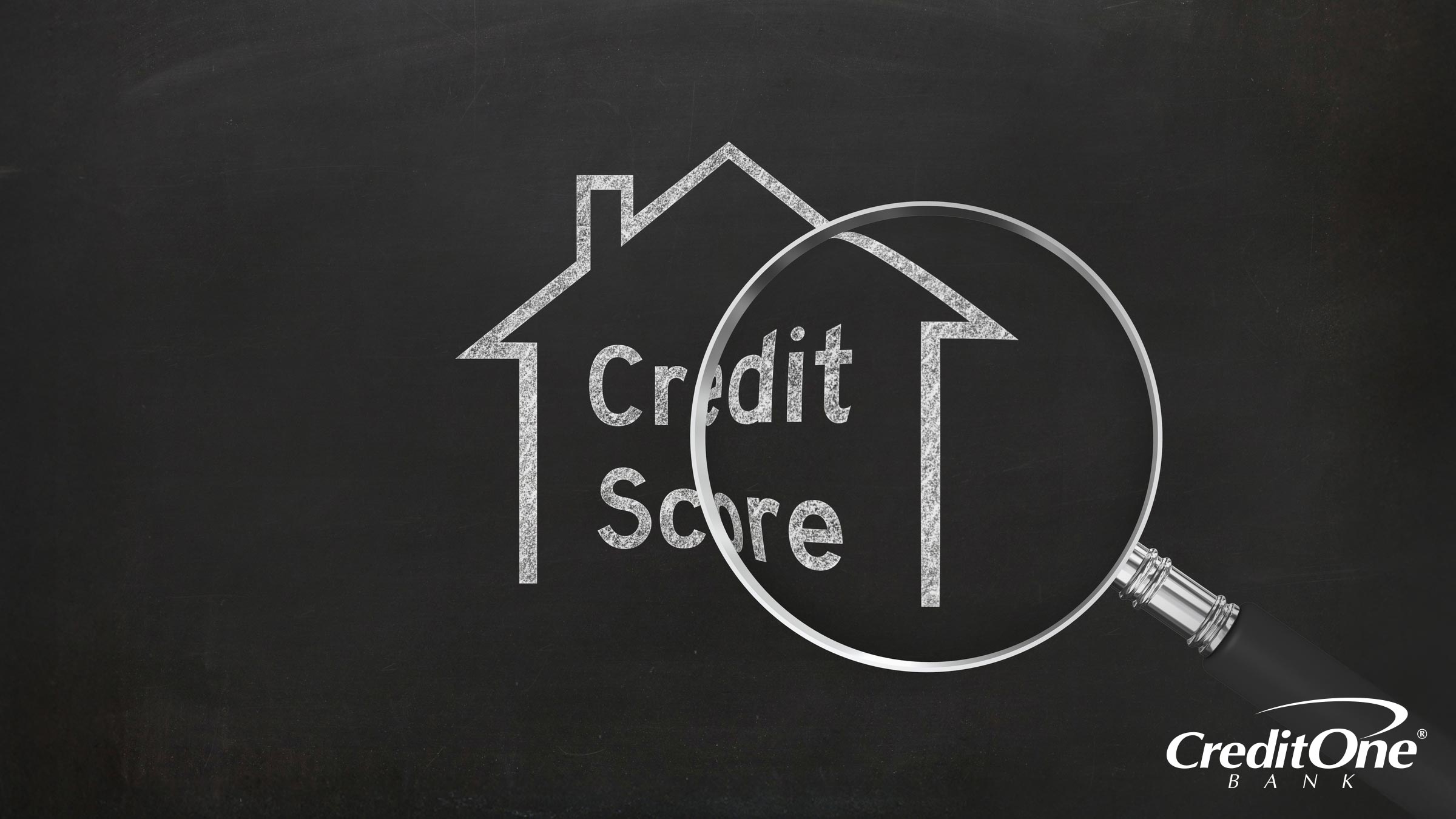
What is a Credit Score?
October 07, 2025
You hear a lot about credit scores, but what exactly are they? Find out what goes into your credit score and why it’s important.

Introduction
When you were a kid in school, you got rated by letter grades in every class. Now that you’re grown, you’re still scored and graded — but by numbers instead of letters.
Meet the credit score. A seemingly innocent 3-digit number that follows you through your financial journey, triggering terms and conditions that get proportionately better based on the size of the number.
Some people look at credit scores as an indicator of overall financial health, but lenders primarily view them as a measure of “creditworthiness.” Credit scores are their main tool for deciding whether to offer someone credit, how much, and at what interest rate.
But how exactly are credit scores calculated? The two main scoring model companies, FICO and VantageScore, use several key factors to determine your credit score based on information in your credit reports. They don’t treat these factors exactly the same, but they do use similar guidelines.
Just like studying and handing in your assignments will help you get a better grade in school, changing your financial habits related to these key components will help you get a better credit score. Let’s look at what’s included and how each part is weighted so you can take control and make some changes.
Credit Score Basics
First things first. It’s important to understand that you have more than one credit score — in fact, you have several from FICO and several from VantageScore, each focused on different things. They typically won’t be at different ends of the credit spectrum, like night and day. But they likely won’t be exactly the same either.
Another key point is that credit scores change all the time based on the current contents in each of your credit reports.
Creditors can submit account-related info to any or all of the three credit bureaus — Experian, Equifax and TransUnion. Each of those bureaus issues a different credit report, and your credit scores are generated from the data in one or more of those reports.
Since your three credit reports likely have different information, each one will probably generate a slightly different credit score. VantageScore was created by the three bureaus, and it can amalgamate the data from all three into a three-bureau or tri-bureau score — but individual banks may just provide a one-bureau VantageScore. FICO always generates a unique credit score from each of them. So your FICO Score from Experian probably isn’t the same as your FICO Score from TransUnion.
Current popular scoring model versions include FICO 8, the FICO 10 Suite, VantageScore 3.0 and VantageScore 4.0. Those are also weighted and calculated in slightly different ways. And then we have specialized scores for auto loans, mortgages, and other unique cases.
So depending on what bureau and what scoring model any given lender uses, you’re going to end up with different results. The odds of having the exact same score across the board are so low that you statistically have a better chance of winning the lottery or being hit by lightning (and those things are pretty rare).
Here’s the good news: All of these credit scores are calculated using similar criteria, so you can target what’s most important when you’re looking to make changes.
Payment History
Your payment history is worth 35% of your FICO Score and 40% of VantageScore, which makes it the one factor with the biggest impact. So even though lots of different things go into calculating your credit scores, the most important habit to cultivate is making on-time payments of at least your minimum due every month.
It takes time to establish this positive payment history, but being consistent about it tells creditors that you’re likely to repay new debts on time as well. While one late payment probably won’t ding your credit score too much, missing a few can lower it significantly. It’s important to know exactly when your monthly bills are due so you can make the deadline — or better yet, set up AutoPay so you don’t have to think about it.
Credit Utilization
The second most important ingredient in your credit score, which counts for 30% of the final FICO number and 20% of VantageScore, is your credit utilization ratio. This measures how much of your credit lines you’re currently using.
Think of it like your glass being partially full of liquid. If you have a glass in the proverbial “half full or half empty” state, that would be 50% utilization because you’re using half of the capacity. But with your credit card, charging up half of your credit line and calling it half full isn’t a sign of optimism — it’s a sign that you’re using too much of your credit.
It might sound unbelievable the first time you hear it, but you should only use 30% or less of your credit limit if you want to improve your credit score. The calculation is based on both your individual card utilization and the aggregate utilization across all your accounts, so being conservative with each of your credit purchases is important.
For example, someone with a $4,000 balance across several credit cards with a collective $20,000 limit credit card is only using 20% of their available credit. That person will generally have a higher credit score than someone owing $4,000 on total limits of $5,000, which is an 80% credit utilization.
In other words, if you’re close to maxing out all of your credit accounts, lenders may see you as financially overextended and therefore a high-risk borrower.
Credit Age
Your length of credit history, including the average age of your open lines of credit, accounts for 15% of your FICO credit score and about 20% of VantageScore — where it’s sometimes called “depth of credit” and combined with the next category, credit mix. The length of your credit history aligns with your oldest open accounts, while the average age incorporates the newer and older accounts averaged out. These calculations usually include credit cards as well as mortgages, student loans, and auto loans.
This category can get complicated, so let’s strip it back to the basics. The longer your credit history is, the more likely lenders are to view you as financially trustworthy — as long as your track record is a good one. Young adults just starting to establish credit typically have lower scores because of their limited credit history. But a bit of patience and strategic credit management skills should boost their scores over time.
Credit Mix
The assortment of credit you have is called your credit mix, and that constitutes approximately 10% of each credit score. When you can manage a variety of debt types, lenders see you as more responsible. You look like an expert juggler instead of someone dropping balls all over the floor.
A robust credit mix requires both revolving credit (like credit cards and lines of credit) and installment credit (like loans and mortgages). So if you have several credit cards, a mortgage, and a car loan, and you’re making timely payments on all of them, you’ll typically have a stronger score than someone with only one or two active credit cards.
However, if you only have credit cards right now, rushing out to get a loan isn’t necessarily the answer. It has to make sense for your personal situation, and it’s not always worth the hard pull just to mix it up. More on that in a second.
New Credit
It might seem the same as “credit age” at first glance, and it does impact your average age of credit. But requests for new credit go into their own category. This isn’t about how long you’ve been managing credit, but how many accounts you’re trying to get right now.
Spoiler alert: If it’s more than one over the past few months, lenders start to see you as desperate for credit. And that’s a red flag for them.
It doesn’t matter how many credit accounts you’ve had in the past — in fact, in some ways, the more the better. Especially if you’ve had the same ones for a long time. But every time you apply for a new credit card or loan, your score gets dinged a little bit. And new or recent credit is weighted at another 10% or so for both scoring models.
This all means that while opening a credit card is a great way to help build your credit, applying for too many cards too quickly can have a negative impact on your credit score.
When you apply for new credit or a loan, it triggers a “hard inquiry” on your credit profile — also called a hard credit check or hard pull. Too many hard pulls within a short period of time tells lenders that you’re desperate for funds and might not be able to pay back the debt.
On the other hand, soft inquiries don’t affect your credit at all. Soft pulls occur when you check your own credit report or credit score, see if you pre-qualify for a credit card, or when a lender checks your profile before sending out a pre-approval letter. You’re the only one who can see soft pulls on your credit report, but hard pulls are visible to lenders for up to two years.
Bottom Line
The first step to maintaining a healthy credit score is understanding what goes into it. Just like the first step to having a healthy body is understanding how it’s affected by what you eat.
One way to stay on top of it and see where you are in your financial journey is to continually monitor your credit. If you need a credit card that offers free online access to your credit score and credit report summary, always see if you pre-qualify before applying. That lets you find the right options for your circumstances while preventing unnecessary hard pulls.



